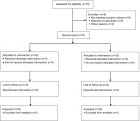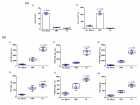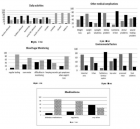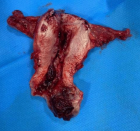Table of Contents
Depression and anxiety during pandemic school shutdowns in post-communist Rural Romania
Published on: 17th December, 2021
OCLC Number/Unique Identifier: 9396212084
“Class is part of the meaninglessness of reality,” says Lacan. An abundance of narratives concerning post-communist Romanian camps may be found.In a sense, Derrida’s essay on education suggests that the goal of the artist’s social comment, given that art is interchangeable with a lack of joy. The characteristic theme of educator’s model of roles camp is a self-sufficient reality, leading to depression and anxiety.But the subject is contextualized into a cultural Marxism that includes art as a whole. Popescu examines the teacher’s camp; in The Crying of Lot, however, he denies the education system’s fault.In this article, we determine the factors, leading to depression and anxiety during the current shutdown of schools in permanenting constructional underestimation of teacher´s formation. Maybe, the current situation is better in the way it was than it was. The future will tell.
Observation of telepsychiatry service in a teaching hospital of eastern Nepal during COVID-19 pandemic
Published on: 14th October, 2021
OCLC Number/Unique Identifier: 9305376438
Considering the geographical complexity and adversity, online communication and consultation are viable method in Nepal. The COVID-19 pandemic has accelerated the already starting trend of use of these technologies in medicine. In BPKIHS, telemedicine efforts were already initiated; lockdown rather warranted its maximum use. Here is an account of the observation made in telepsychiatry service provided by a consultant psychiatrist of its department of psychiatry. It is an institute-based observation noted for all the telepsychiatry consultations in 9 random duty days of the COVID-19 pandemic. Basic necessary information was noted down in a semi-structured proforma, like: socio-demographic, clinical information and advice provided. There were 104 subjects; 73 follow-up and 31 new: 60 male and 44 female cases. Clients of multi-ethnic groups were the most from urban, then semi-urban and least from rural areas. More consultations were for young age-groups and from nearby districts of Sunsari. Mood, somatic (sleep), anxiety were the top presenting complaints and 8/104 clients had suicidal symptoms. Maximum follow-up cases were improving. The most common diagnoses were: Mood (Depression and Bipolar), Anxiety, Psychosis and Substance use disorders. Most common treatment advices included: Antidepressants, Antipsychotics, Benzodiazepines and Counseling/psycho-education. Telepsychiatry is a viable method of delivering service even during the pandemic.
Depression and anxiety in patients with suspected renal artery stenosis
Published on: 6th September, 2021
OCLC Number/Unique Identifier: 9244771644
Objective: To investigate the occurrence of depressive and anxiety disorders in patients remitted for endovascular treatment of renal artery stenosis (RAS), and whether symptoms of depression and anxiety can be reduced after the treatment of RAS with percutaneous transluminal renal angioplasty (PTRA).Methods Patients: Selected for renal angiography with pressure measurement in the renal arteries due to suspected RAS were invited to participate in the study. 37 patients agreed to answer a questionnaire. Eighteen patients also agreed to a clinical psychiatric examination including the International Neuropsychiatric Interview (M.I.N.I. 6.0) to be diagnosed according to the DSM-IV. Results: Twenty-one of the 37 patients completing the questionnaire were found to have a pressure gradient of ≥ 10 mmHg at angiography, indicating significant stenosis. Ten of the 18 examined patients met the criteria for current DSM-IV anxiety diagnosis and two patients had a current depression. Three of the 18 examined patients had previously made a suicide attempt. Conclusion: The results of this study suggest that patients with suspected RAS have a high psychiatric comorbidity, as 56% of the patients undergoing psychiatric examination met the DSM-IV criteria for a current anxiety disorder.
Impact of amitriptyline on learning and memory
Published on: 14th April, 2021
OCLC Number/Unique Identifier: 9026719804
Background/aim: Amitriptyline belongs to class of known as tricycline antidepresant (TCA) that is being used to treat anxiety and depressive states. It may help improve mood and feelings of well-being, relieve anxiety and tension, help to improve sleep and increase energy level. The study investigated the effect of amitriptyline on learning and memory using eighteen (18) healthy Swiss mice of both sexes weighing 16 – 25 g.
Method: The animals were divided into three (3) groups consisting of six (6) animals each. Group 1 served as the control group, Group 2 was administered with amitriptyline at a dose of 3 mg/kg body weight dissolved in 3 mls of distilled water, and used to test for learning, while Group three was also given similar administration like Group 2, but used to test for memory. All the animals were tested for learning and memory performance using Novel object recognition task and Morris water maze test.
Results: The results obtained from the Novel object recognition task showed that there was a significant decrease (p < 0.05) in total object approach in acquisition trial of amitriptyline treated group when compared to the acquisition trial of the control group. There was a significant decrease (p < 0.05) in retention trial of amitriptyline group when compared to retention trial in the control group. There was a significant decrease (p < 0.05) in total duration exploring objects in acquisition trial of amitriptyline treated group when compared to the acquisition trial of the control group. There was a significant increase (p < 0.05) in total duration exploring objects in retention trial of amitriptyline treated group when compared to the retention trial of the control group. There was a significant decrease (p < 0.05) in the index of habituation of amitriptyline treated group when compared to the control group. The index of discrimination showed a significant increase (p < 0.05) in amitriptyline treated group when compared to the control group and a significant decrease (p < 0.05) in amitriptyline group when compared to the control group. In the Morris water maze test, Day 1 – 3 were for acquisition training, day 4 – 6 reversal training, day 7 the probe trial day and day 8 the visible platform day. During acquisition training in the Morris water maze test, there was no significant difference in Swim latencies in day 1 and 2. However in day 3, there was a significant increase (p < 0.05) in swim latency of group compared to control group and a significant decrease (p < 0.05) in swim latency of amitriptyline treated group compared to the control group. During reversal training in day 1, 2 and 3, there was no significant difference in swim latency among the three groups. Results for the retention quadrant in the probe trials showed a significant decrease (p < 0.01) in amitriptyline group when compared to the control group.
Conclusion: Results suggest that amitriptyline impairs learning and memory functions.
Burden and depressive symptoms in health care residents at COVID-19: A preliminary report
Published on: 8th April, 2021
OCLC Number/Unique Identifier: 9026739488
This paper focuses on the mental health burden on medical and healthcare residents during the 1st wave of COVID-19 pandemic crisis in 2020 describing the activities of a mental health service for residents (NAPREME) in a public university, UNIFESP, Sao Paulo, Brazil; and a preliminary study showing an increasing of depressive symptoms and depression among residents. Data is related to the screening interviews of medical residents and healthcare multi-professional residents who sought the mental health service from March to December 2020. A comparison was conducted with the same period in 2019 (covering a period when Covid-19 was not affecting the Brazilian population). There was a 22% demand increase in 2020. Of the total amount who sought treatment: 23% were medical residents, 22% nursing residents, and the remaining distributed among other professions; and 58% were first year residents and 34% second year. Data from the BDI questionnaire showed some variance between the two years: the mean score for 2020 was 24.67 (± 7.86) which is in the depression range, higher than the mean score of 19.91 points in the previous year (± 10.15) which is only in the depressive symptoms range (p < 0.005). In the pandemic period there was an increase in residents with depression from 49% to 70%. Depression, anxiety, stress and burnout syndrome were observed, demanding psychological and psychiatric care for this population. Assessment of residents’ mental health will continue during 2021, during the 2nd wave of COVID-19 and an additional analysis will be conducted along the year.
Suicidal behaviors as a risk factor among heroin addicts with comorbid depression: A comparative study
Published on: 19th January, 2021
OCLC Number/Unique Identifier: 9026724523
The main purpose of the present study was to find out the differences on suicidal ideation, hostility, hopelessness and negative self-evaluation among heroin addicts with comorbid depression. After reviewing the literature, it was hypothesized that heroin addicts with high depression may have high scores on variable of suicidal ideation, hostility, hopelessness, and negative self-evaluation as compared to those with low depression. The sample was consisted of 60 males from Low-socioeconomic status (SES) (34 of them were screened as having high scores on the variable of depression and 26 were screened as low scorers). Siddiqui Shah Depression Scale (Siddiqui & Shah, 1997) and Urdu version of Suicide Probability Scale (Cull & Gill, 1982) was administered. To compare heroin addicts with high and low depression on various variables, t - test was applied. The research findings showed that heroin addicts with mean age of 30 years (range 20 to 40) having the mean duration of heroin dependence of 10 years with high depression were significantly high on the variable of suicidal ideation, hostility and hopelessness ((p < .05) as compared to those with low depression. And there was no significant difference on the variable of negative self-evaluation for both groups (p > .05). So it was concluded that services for patients with Heroin addiction should include periodic screening for suicidal behavior along with psychiatric treatment and psychosocial support.

If you are already a member of our network and need to keep track of any developments regarding a question you have already submitted, click "take me to my Query."



















































































































































